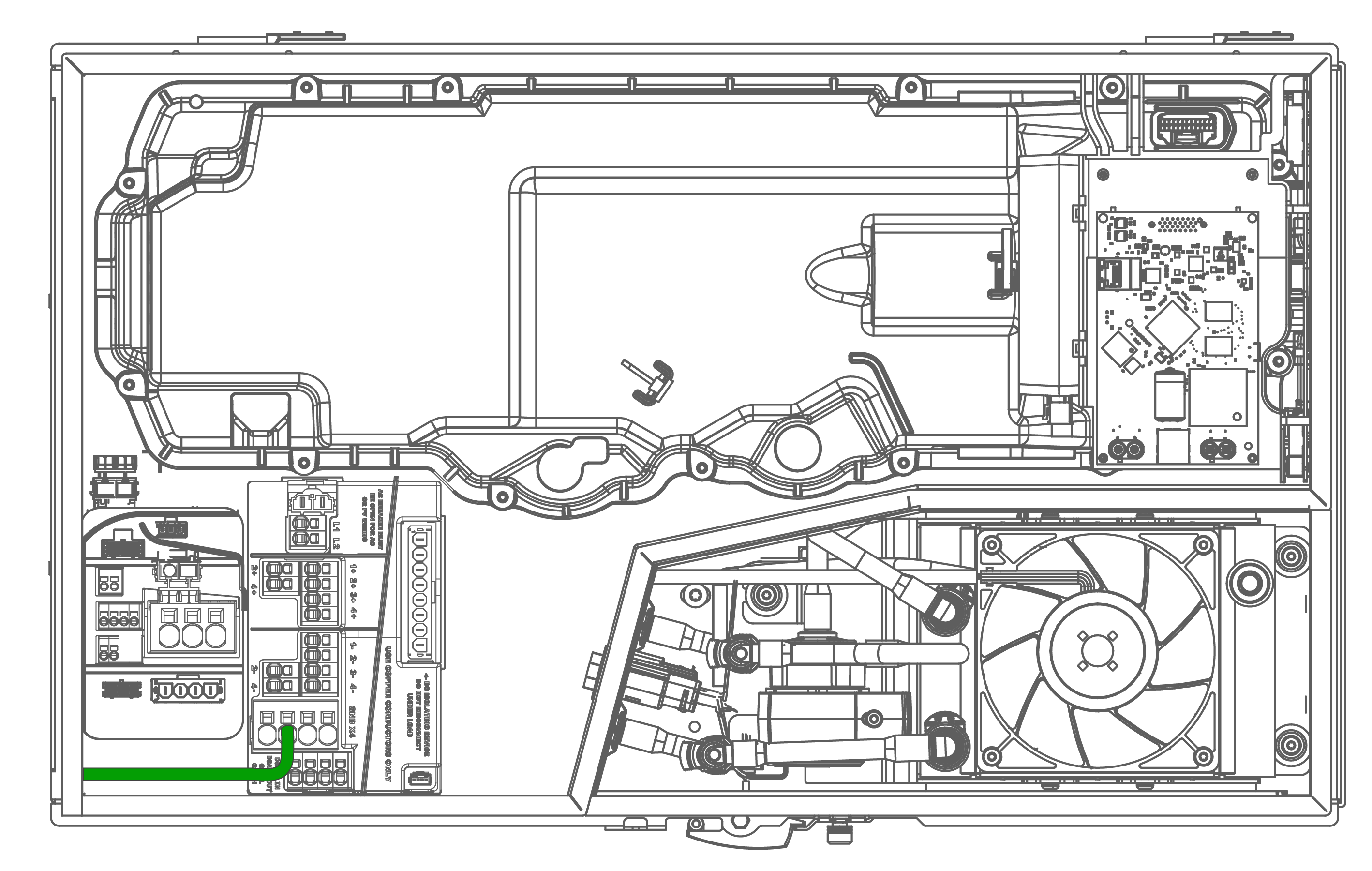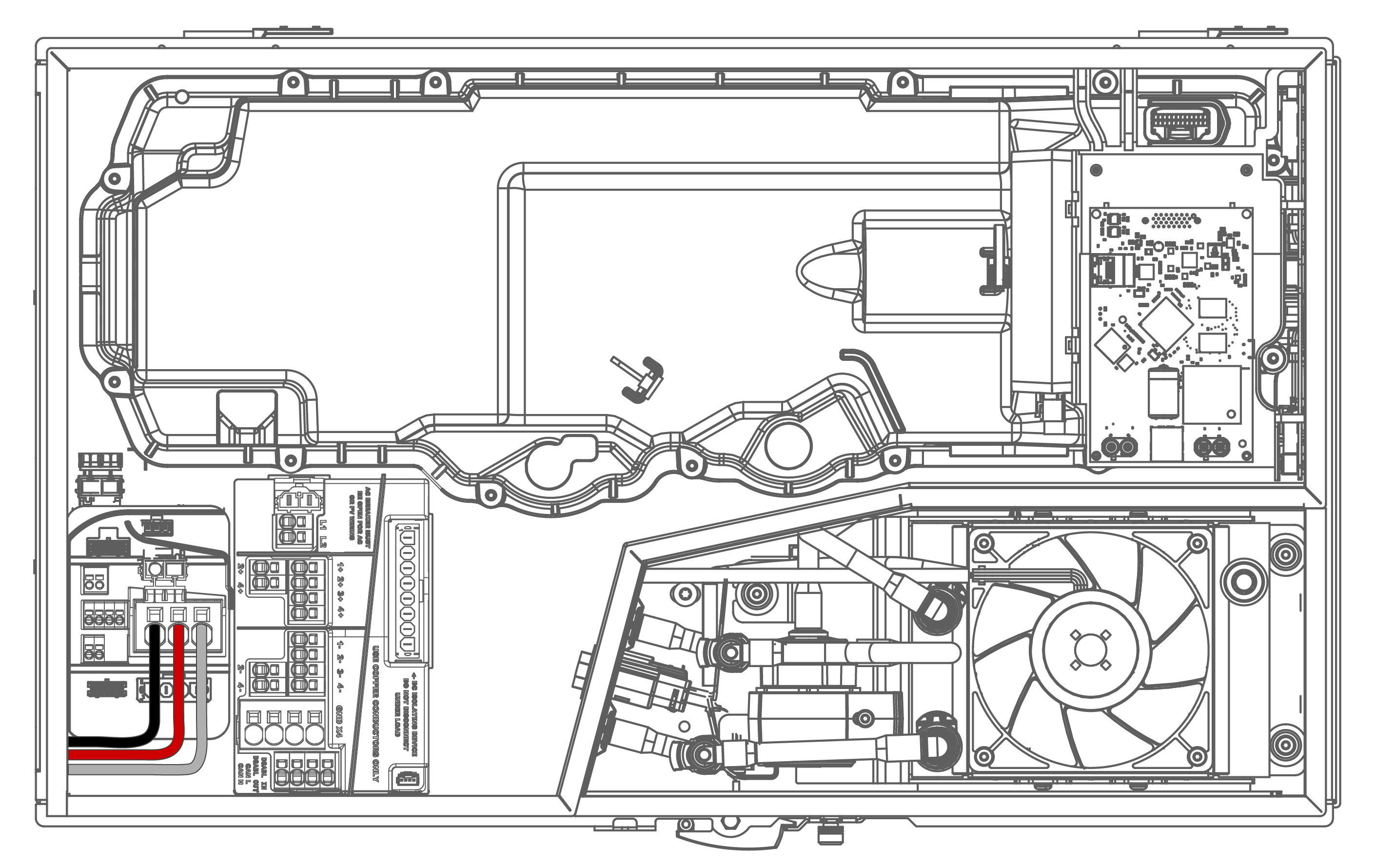STEP 6: Make AC Power Connections
- Disconnect the AC circuit breaker of the main service disconnect and secure it against reconnection.
- Connect the Powerwall+ AC power conductors to the
overcurrent protection device in the main panel or sub panel according to the
electrical service type.NoteEach Powerwall+ requires a 50 A overcurrent protection device. This device serves as the disconnect for Powerwall+ and must be wired in accordance with local wiring codes and regulations.NoteTesla recommends a 50 A circuit breaker for overcurrent protection, as a circuit breaker can easily be reset by the homeowner if needed. As such, the required overcurrent protection device is referred to as the Powerwall+ circuit breaker throughout this manual. Alternative overcurrent protection devices, such as a fused disconnect, may be used and may result in a poor customer experience if the homeowner cannot reset the system in the unlikely event of a trip.NoteWhen using Eaton branch breakers on continuous loads such as Powerwall, Eaton strongly recommends using only type BR breakers that end in H (for instance BR260H).
- (Conduit installations only) Run conduit as needed and attach the conduit fitting to the solar assembly AC wiring knockout.
- Run the AC power conductors and the
equipment grounding conductor from the main panel through the conduit or cable gland
and pull them into the solar assembly wiring compartment.NoteSee Mount the Solar Assembly for a labeled diagram of the solar assembly knockouts.
- Connect the Powerwall+ equipment grounding conductor to an equipment grounding terminal in the solar
assembly.
Figure 1. Equipment Grounding Conductor 
- For each AC conductor:
- Strip the conductor insulation up to 10 mm (0.39 in). If the conductor is finely stranded, provide it with a ferrule.
- Insert a cabinet tip or electronics tip slotted screwdriver (up to 3.2 mm or 1/8-inch) into the actuation shaft to open the terminal.
- Insert the conductor as far
as possible into the terminal and remove the screwdriver from the actuation
shaft to close the terminal.

- Perform a pull test to ensure
the conductor is fully seated in the terminal.WarningA neutral is required.
Figure 2. Powerwall+ AC Wiring 
Warning
Inserting conductors
into the actuation shafts rather than the terminals can result in fire. Ensure
conductors are inserted in the terminals.
- Ensure the conductors are inserted into the terminal points (round openings) as far as they will go and not into the actuation shafts (rectangular openings)
- Ensure that the terminal points are allocated to the correct conductors
- Ensure that the conductors are plugged completely into the terminal points up to the insulation